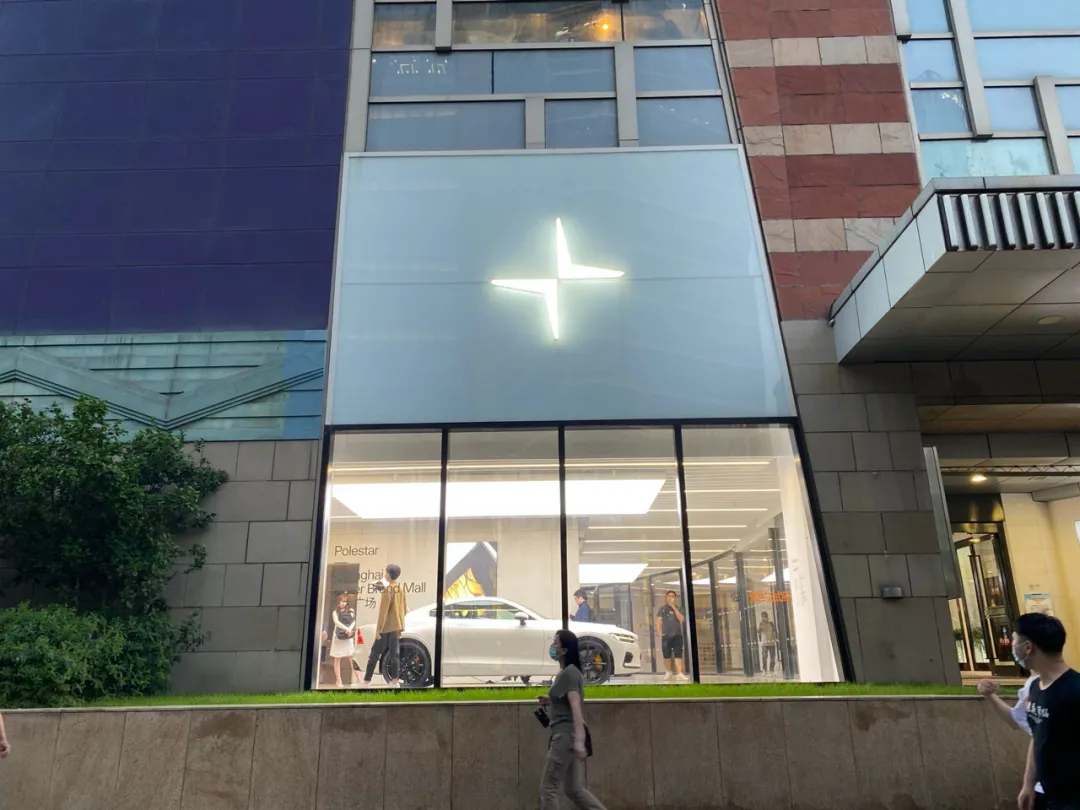The Story of Polestar: The Struggle of a Newborn in the Auto Industry
Outing 100 People is a media under the Outing Bairen brand, focusing on the evolution of the automotive industry.
The appearance of Lujiazui is often like the gaze of the dancers on the stage of the Bailemen, hazy, chaotic, and ever-changing. The most developed transportation hub, the leading consumer paradise, the surging capital waves along the Huangpu River, and the international events that are blooming everywhere… Neon lights and shop windows are dizzying every heart.
More than 200 meters south of the Oriental Pearl Tower, at the intersection of Lujiazui Ring Road and Mingshang Road, the Zhengda Square is bustling with crowds. The brand images presented in each window seem to shine like the sons of heaven. In this row of shop windows, Polestar’s lights are particularly bright, as if to attract all eyes to stop.
However, this showroom, which opened at the end of November last year, is also hinting at the difficulties and hardships of this newborn in the auto industry with its state of “even though there is no one in the entrance and exit of the mall.”
The brighter the light, the more lonely it is.
Lujiazui can absorb Polestar, but it is not responsible for its destiny. As night falls, in the colorful neon, it seems that you can step on the center of the stage in three or two steps. However, in those chaotic nights, the future is half clear and half obscure.
Polestar, embedded in the shop window of Zhengda Square, is like those passengers on the circular pedestrian overpass, lost in the rushing stream.
What is Polestar going to be?
On April 13th, Polestar 2 expanded its product lineup and provided single-motor and dual-motor versions, with two battery packs of 64kWh and 78kWh, a total of three models, lowering the price range to a starting price of 252,800 yuan. On the same night, Ford Mustang Mach E was launched strongly, and two days later, Polestar Zero was released, stealing all the attention.
Not many people care about a brand called Polestar launching a new version of a car model. Until now, Polestar’s problems seem to still be in the stage of how to make a new brand known to others.
“To be alive.”
These two heavy words have become three-dimensional again. A cruel reality is that in 2020, Polestar had only 365 cumulative insurance cases in China, which is eye-catching and heart-wrenching.
At this time, looking back at Polestar again, the lower price range is irrelevant for Polestar. The problem is still the issue that should have been clarified at the establishment of the brand.
When Plato proposed the philosophical proposition of “Who am I? Where do I come from? Where am I going?”, it was destined that many people would still be trapped here more than 2,000 years later.
It seems that Polestar is also in this line.
When the showroom manager introduced the Polestar 2 to “Outing 100 People/AutocarMax”, he used every possible means and made a comparison between Polestar and Volvo without hesitation, making analogies such as “Polestar to Volvo is like AMG to Mercedes-Benz.””Many of Polestar’s customers are converted Volvo users.
What needs to be clarified most is what makes Polestar unique, but it lacks it. Sales logic and language have obvious flaws, which can be easily broken.
When Volvo is electrified, what about Polestar? He doesn’t know.
In fact, when asked about the tone difference between Polestar and Volvo at the opening of the showroom, the then Polestar China CEO, Gao Zixiong, could not explain about Polestar’s description.
At first, it was said that it was cool, it was a high-performance brand, it was a brand that surpassed the blue from the green, and sometimes they emphasized safety. If the brand tone cannot be clearly expressed, how can it be conveyed to consumers clearly and concretely?
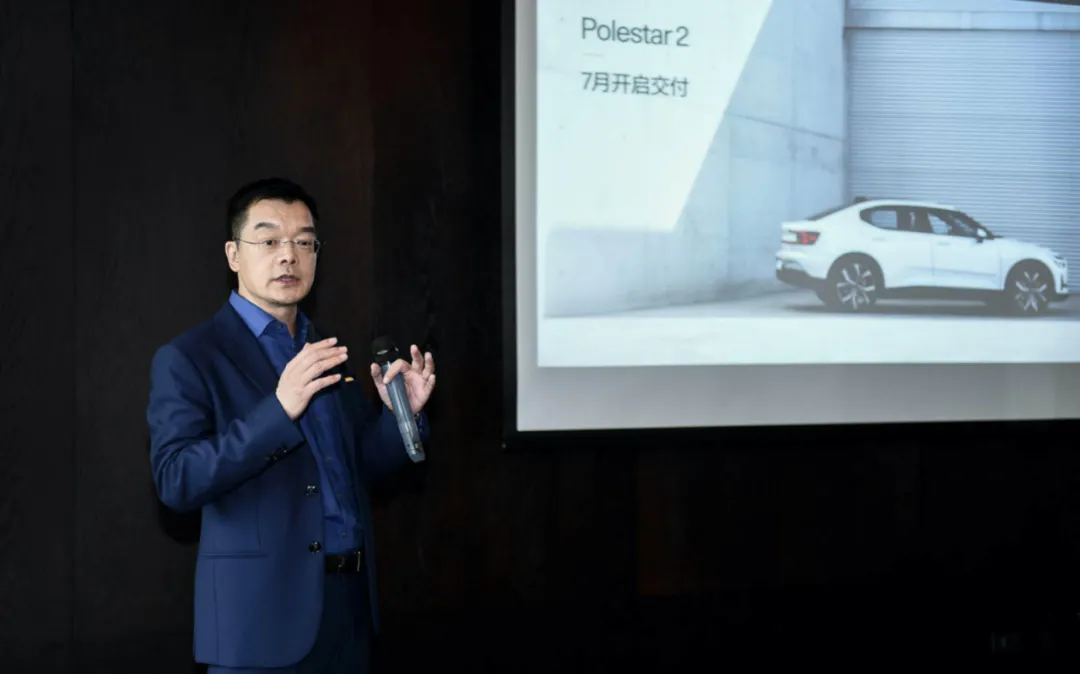
In 2016, Geely and Volvo proposed the idea of Polestar’s independence, wanting to give it a new meaning. At that time, the new brand actually established the positioning of “ultimate performance”.
Therefore, the parameters of Polestar 1 did reach the “extreme”: power of 600 horsepower, output torque of 1000N·m, carbon fiber body weight reduction of 230kg, Hermès Öhlins in the shock absorption system, Akebono 6 piston brake caliper, 400mm brake discs… all the information makes people’s adrenaline soar.
However, these cannot be ignored. The design of Polestar 1 is identical to that of Volvo, whether it is Thor’s hammer headlights or waterfall-style grille, or almost the same interior, which makes people exclaim that this is a two-door GT version of Volvo S90.
If the brand tone at this time is still relatively clear, then the product layout after this is running blindly on the unclear positioning road. The late Polestar 2 is still ambiguous with Volvo in terms of design, and its prototype is the 40.2 concept car released by Volvo in 2016. At the same time, Polestar 2 also lost the “ultimate performance” label.
Perhaps because the design has been criticized too much, Polestar Precept decided to get rid of the label of Volvo’s design. Precept means declaration, a brand new design concept, which seems to declare to break the relationship with Volvo.
In the debut of Precept, “ultimate performance” was also cut off. Since then, Polestar’s brand positioning seems to have moved towards “ultimate environmental protection”.
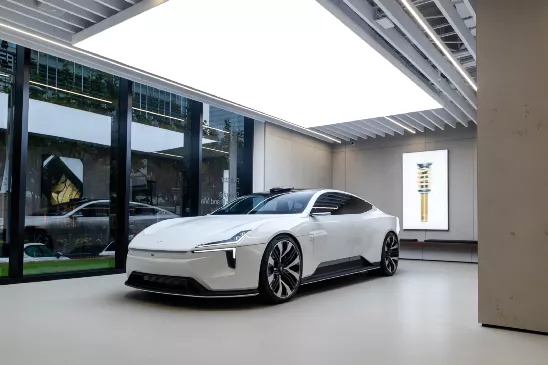
The interior of Polestar Precept uses a variety of innovative environmentally friendly materials, including recyclable PET plastic bottles, fishing nets, and cork fibers. The natural flax fiber composite material is applied to the interior panels and seat back panels of Precept.”However, there has been limited marketing and hype for “extreme environmental protection”. Is the confused Polestar still uncertain?
Does Li Shufu still have patience?
In more than a thousand days and nights, the first batch of new car makers represented by NIO and XPeng have worked hard to achieve stage victories; real estate companies and other barbarians are lurking at the door; traditional car companies are launching new brands to regain the initiative; Internet companies also want to take a share of the pie with their own product ecology, and the tide keeps rising.
The once virgin land that has been cultivated is bustling with excitement, while Polestar, standing still like a star, is silently watching from across the river.
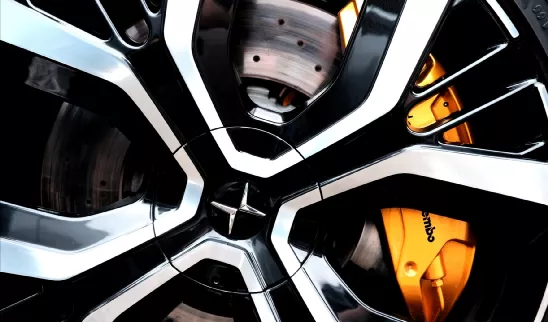
As the vanguard and testing ground of Geely’s electrification, Polestar is a brand that has been at the forefront. Does Li Shufu still have the patience to wait? No one can ignore the fact that Geely is still not established in the field of electrification.
Since the high-profile launch of the “Blue Geely Action” new energy development strategy in 2015, Geely’s transformation has not been smooth. In 2019, Geely’s total sales of new energy and electrified vehicles were 113,000, accounting for 8.3% of total sales. In 2020, the total sales of new energy vehicles such as Geometry A, Geometry C, Dihao EV, and Dihao GSe were only 68,100 units, accounting for 5.16% of sales.
During the same period, Tesla’s cumulative sales for the year reached 499,500 units, and even traditional automaker BYD achieved a sales volume of 179,000 units.
The strategic goal of “Blue Geely Action” is: achieving a new energy vehicle sales volume accounting for more than 90% of Geely’s total sales by 2020; among them, the sales volume of plug-in and hybrid vehicles accounts for 65%, and the sales volume of pure electric vehicles accounts for 35%. There is no doubt that the gap in sales volume percentage indicates the initial failure of Geely’s new energy goal.
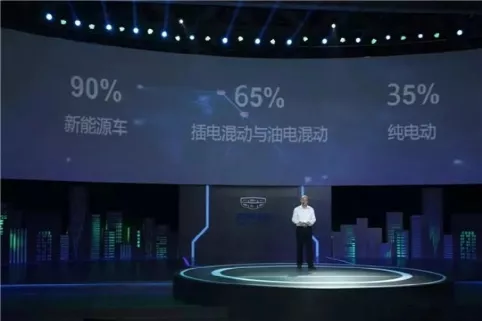
Last year, Li Shufu went to Gothenburg to attend the board of directors of Volvo Cars and listened to Thomas Ingenlath’s work report, expressing his dissatisfaction with the development of Polestar in the Chinese market. Li Shufu has privately stated that the voice of Polestar is too weak, and even negative news is rare.
From the beginning, it seems that the Polestar team lacked something called “passion.”
On October 17, 2017, Volvo announced in Shanghai, China that its high-performance brand Polester would become a new independent high-performance luxury electric vehicle brand worldwide.In these four years, the new “disrupter” has been slow in its base planning and channel layout progress since its first hybrid GT racing car, the Polestar 1, was unveiled. The first store did not start operation until October 2019, and the second product, Polestar 2, did not arrive until mid-2020, with a minimal presence in brand marketing.
Meanwhile, Tesla only took a year to go from groundbreaking to delivery in Shanghai.
Don’t forget that Polestar does not need to start from scratch like other new car brands. As Li Shufu said, Polestar is backed by two traditional car companies, Geely and Volvo, which means that Polestar naturally has significant advantages in R&D design, technical reserve, and production.
During this period, frequent personnel changes have become a focus of Polestar’s news. On March 16 of this year, Polestar announced that Håkan Samuelsson would no longer serve as the CEO of Polestar China, and Nathan Forshaw, the head of the global strategy and development department, took over.
Samuelsson only served for one year. Last year, on the same day, Samuelsson took over this position from Wu Zhenhao. With the earlier resignation of Shen Feng, Polestar has incredibly experienced four Chinese zone CEOs in just four years.
Shen Feng, a technology expert, quickly switched to NIO after resigning as Polestar’s CEO, which seems to reflect his lack of confidence in Polestar to some extent.
In any case, Polestar can no longer go so slowly, as the fiercely competitive battlefield and internal groups do not allow it.
First of all, Volvo has already had a complete electrification strategy and hopes that pure electric vehicle sales will account for more than half of total sales by 2025. By 2030, Volvo will transform into a pure electric vehicle brand. Can Polestar, which is like a mirror image of Volvo, still sleep well?
After sorting out the brand matrix under Geely’s control, there is also the existence of Lotus, and Geely has also declared that it has decided to build it into an ultra-luxury brand like Porsche and even lead it towards the road of electrification.
As a result, Thomas’s words, “Polestar wants to be the Porsche of electric cars,” seem a bit embarrassing.
Moreover, under the new architecture, Geely has once again launched a new intelligent brand, Lynk&Co, which may inevitably clash with Polestar as a brother brand.
Even today, when I posted a photo of Polestar 2 on my moments, some people still asked what brand of car it was. In contrast, there were many netizens eagerly anticipating the release of Lynk&Co 01 before it was officially announced. Embarrassingly, the price range of the Lynk&Co 01 and Polestar 2 also has a significant overlap.”I’m just worried about you. Although all are car brands, some are successful while some are out of business. And you seem like a shooting star, falling rapidly.”
This article is a translation by ChatGPT of a Chinese report from 42HOW. If you have any questions about it, please email bd@42how.com.
